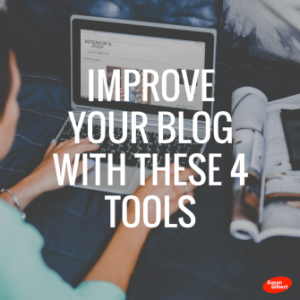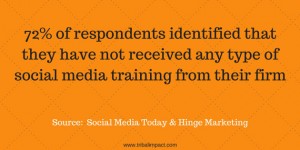What makes a company a great place to work? Is it the perks? The location? Maybe the compensation?
Ultimately, the key to creating and sustaining a high-performing organization is establishing a healthy work environment. Businesses that prioritize long-term success must show that they care about their employees, whether their team members are on-site, remote, or part time. But it’s hard to define a healthy work environment, let alone put it into practice — particularly when so many employees are working from home. This piece delves into what a healthy work environment is and outlines seven steps to get there.
What does a healthy work environment look like?
While some classify work environments into various categories — like creative, social, goal-oriented, and traditional — the best work environments feature the positive elements of all these types. A fantastic work environment celebrates innovation and individuality. It encourages collaboration and teamwork while providing employees with the flexibility and autonomy they need to reach their personal goals.
Healthy work environments are also safe, both psychologically and physically. Organizations with great cultures make it a point to support employee wellness and accept all backgrounds. Their leaders are transparent about why decisions are made, and they recognize employees who live out company values each day.
7 ways to build a healthy work environment
Creating and maintaining a healthy work environment requires a winning strategy. Here are seven best practices you can follow to start transforming your organization’s culture for the better.
1. Give your employees a real voice
Feedback is one of the most valuable gifts you can get from your employees. Providing opportunities for employees to express their feelings lets you identify ways you can help them excel.
But to create those opportunities for sharing feedback, you need the right technology. Tools like AI-powered HR chatbots and pulse surveys make it easy to transition from annual surveys — which don’t result in timely action — to an evolving conversation with employees in real time. This makes it easy to pinpoint and resolve your organization’s most pressing issues. Look for an employee engagement platform that includes features like these to make building employee voice simple for HR, managers, and the C-suite.
However, soliciting feedback is only the first step. Failing to take action on survey results leads to lower engagement than failing to survey in the first place. To show employees that their voices actually matter — and keep them motivated to share what they really think — encourage managers to create action plans in response to feedback collaboratively with their teams. Managers can host team sessions to review survey results, discuss areas for improvement, and develop next steps that everyone has a stake in.
2. Show appreciation every day
Think about the last time you got a shout out from your boss when you least expected it. It probably gave you a rush of confidence, instantly boosting your mood. Maybe it even gave you the energy you needed to close out a big project. Frequent, meaningful recognition can dramatically improve employee engagement, retention, and satisfaction. Not surprisingly, recognition is a key part of a healthy work environment.
Recognition is the number one ask from employees in our new normal, and 82% of employees wish they received more recognition. Encourage recognition across your organization, from staff all the way to the C-suite. Recognition should be public so that employees echo and learn from others’ successes, and it should be specific enough to reinforce behaviors that you want employees to repeat.
The fastest way to make recognition a habit is to leverage recognition technology. Organizations without recognition technology are 160% more likely to recognize employees only twice a year or less. By selecting a modern recognition platform, employees can say thanks — or dole out reward points — anytime, anywhere, without interrupting their established workflows.
3. Focus on the workplace itself — even if you’re remote!
Did you know that an attractive office design can make employees up to 33% happier? An employee’s workspace can keep them motivated, improve their well-being, and promote healthy habits. Invest in making your office a more enjoyable place to be, and your employees will love spending time there.
Even if most of your workforce is remote, where they work still affects their performance. Make sure your employees have a comfortable, stimulating place to work outside the office by providing a stipend for things like ergonomic chairs, extra monitors, and standing desks. Ask employees to speak up when they need a new mouse, keyboard, or other office supplies. And remind employees that keeping their desks decluttered, getting enough sunlight, and adding inspiring artwork to their workspace can maximize their productivity and boost their mood.
4. Turn your values into more than just words
No employee wants to work at an organization that lacks compelling values, or one that doesn’t practice what it preaches. Developing and living by meaningful core values drives a great organizational culture and, eventually, profits. Organizations with highly aligned cultures, together with highly aligned innovation strategies, see 30% higher enterprise value growth and 17% higher profit growth. Not only that, compelling values attract better candidates. Over 75% of employees consider it very important to work for a company with defined core values.
Employees look to leadership to establish standards for conducting business, internally and externally. Company values should reflect the underlying philosophy of a business, and they should be easy for all employees to understand and remember. You should also reward and recognize employees who exemplify your company’s core values, which encourages other team members to follow suit.
5. Create an environment of psychological safety and trust
An environment of psychological safety is one where employees are comfortable being themselves. They know they can express themselves freely without the fear of embarrassment or retaliation. When employees are confident their ideas won’t be rejected out of hand or scoffed at, they’re far more likely to participate in meaningful conversations, voice their opinions, and stay engaged.
Establishing a workplace that takes psychological safety seriously requires practice and dedication, but it’s worth it. Employees at high-trust companies report 74% less stress, exhibit 50% higher productivity, and experience 40% less burnout.
Psychological safety is built on a foundation of genuine care for the employee. Regularly check in on employees’ mental, physical, and emotional health, and give them the time off they need. Most importantly, teach managers to adopt practices that promote psychological safety. Workshops can be a great way for managers to practice leading with empathy, giving specific recognition, and phasing out micromanagement. Managers need to listen more than they speak and should invite open and honest conversations between them and their teams. Besides nurturing trust, this sets an example for team members at your organization who may find themselves in a leadership role one day.
6. Prioritize cultural alignment when hiring
Organizational culture is a shared experience, felt throughout a company and developed over time. As you might imagine, the people your organization hires play a huge role in sustaining its culture. Harvard Business Review found that when properly aligned with personal values, drives, and needs, “culture can unleash tremendous amounts of energy toward a shared purpose and foster an organization’s capacity to thrive.” Aligning your workforce with your culture should be central to your strategy for beating the competition.
During the recruitment process, it’s crucial to vet candidates carefully to ensure they match the energy of your company and are passionate about its mission. Ask questions about the culture they experienced at previous companies and what they liked or didn’t like. Find out what research they’ve done on your organization’s culture and what positive qualities they bring.
And don’t forget it also goes both ways. The culture of an organization is apparent from the moment a candidate speaks to any employee. Since potential hires can pick up on cultural dysfunction during the interview process, the team members they meet should strive to exemplify your organization’s best cultural traits.
7. Empower your team with what they need to succeed
No matter how capable your workforce is, they need support to be their best selves at work. Empowering employees can take many forms, from extra learning and development, to greater flexibility in working hours, to autonomy over new projects. Employee empowerment requires managers, HR, and the C-suite to act in tandem to provide employees with whatever it takes to build success.
Of course, knowing exactly what your team needs to succeed requires a strong culture of feedback. Unfortunately, one in seven organizations lack a formal mechanism for listening to their employees. And while 64% of employees want an always-on feedback tool, only 22% of HR leaders say their organization is effective or very effective at fostering a culture of feedback.
Establish open feedback channels using tools like pulse surveys and HR chatbots, and then give employees what they ask for. This demonstrates that your organization is truly listening and encourages team members to keep voicing their wants and needs.
Start improving your work environment today
A healthy work environment is one where employees feel heard, they’re acknowledged for their contributions, and they understand how their work is part of something bigger. This leads to more innovation, greater trust in leadership, and an improved bottom line — organizations with highly engaged workers are 21% more profitable.
HR technology can help you reap the rewards of a healthy work environment.
See how Achievers can help build a healthy work environment by scheduling your free demo today.
Business & Finance Articles on Business 2 Community
(51)
Report Post






